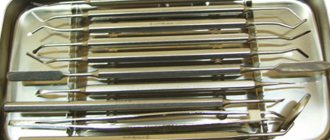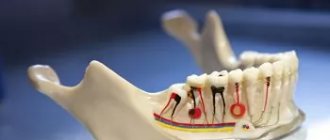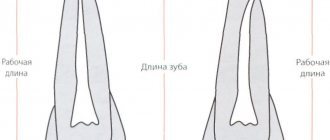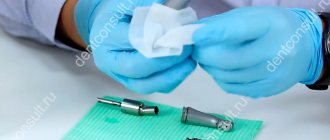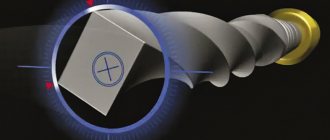A. Iandolo (Alfredo Iandolo) Doctor of Dentistry, Professor
The long-term success of endodontic treatment is closely related to adequate cleansing and quality three-dimensional obturation of the complex root canal system. Probably, a significant percentage of failures is due to the presence of residual pulp tissue and insufficient cleaning of the canals.
The endodontic system consists of spaces easily accessible for manual and machine files (main canals) and spaces that are difficult or inaccessible (delta, lateral and auxiliary canals) (Fig. 1, 2).
Rice. 1.
Rice. 2.
Regardless of the technique used, it is impossible to mechanically treat all areas of the root system. For this reason, biochemical purification is necessary. Modern endodontic treatment methods are based on old methods of work: without the help of an operating microscope, with conventional NiTi files, the use of irrigation without activation.
Endodontic treatment can be divided into stages:
- Opening the pulp chamber is the most difficult phase according to the literature, since an error at this stage may jeopardize further processing. Dissection should be performed under constant magnification and illumination.
- Forming stage using new modified NiTi tools.
- Cleansing stage using irrigant activation.
- Obturation stage.
- Of course, treatment should end with restoration.
After a thorough analysis of the X-ray and clinical examination data, endodontic treatment can begin.
Opening the pulp chamber
The first step is to isolate the surgical field using a rubber dam. Then, with constant magnification and illumination, we must begin to open the pulp chamber using rotary instruments and ultrasonic tips.
The main function of an operating microscope (Fig. 3) is the ability to distinguish between two points that are very close to each other. The human eye is essentially unable to distinguish between two points separated by a minimum distance of 0.1 mm; it will sum them up as one image. When using an operating microscope, the resolution power increases from 0.1 mm to 0.005 mm, which is 5 microns and allows the human eye to discern more details.
Rice. 3.
Ultrasonic instruments include different types of tips that have different shapes and lengths (Fig. 4). In addition, with the introduction of new and improved ultrasound sources, it has become possible to optimize the use of each type of nozzle with the ability to control the frequency and amplitude of vibration. Ultrasonic handpieces guarantee greater precision thanks to their reduced dimensions, which provide a greater view of the working area than rotary instruments.
Rice. 4.
Only after identifying the orifices (Fig. 5) is it possible to continue treatment.
Rice. 5.
Size and coding of endodontic instruments from 08 to 150 (ISO standard)
| Size | Diameter | Tool handle color | |
| D1 | D2 | ||
| 08 | 0,08 | 0,40 | Grey |
| 10 | 0,10 | 0,42 | Violet |
| 15 | 0,15 | 0,47 | White |
| 20 | 0,20 | 0,52 | Yellow |
| 25 | 0,25 | 0,57 | Red |
| 30 | 0,30 | 0,62 | Blue |
| 35 | 0,35 | 0,67 | Green |
| 40 | 0,40 | 0,72 | Black |
| 45 | 0,45 | 0,77 | White |
| 50 | 0,50 | 0,82 | Yellow |
| 55 | 0,55 | 0,87 | Red |
| 60 | 0,60 | 0,92 | Blue |
| 70 | 0,70 | 1,02 | Green |
| 80 | 0,80 | 1,12 | Black |
| 90 | 0,90 | 1,22 | White |
| 100 | 1,00 | 1,32 | Yellow |
| 110 | 1,10 | 1,42 | Red |
| 120 | 1,20 | 1,52 | Blue |
| 130 | 1,30 | 1,62 | Green |
| 140 | 1,40 | 1,72 | Black |
| 150 | 1,50 | 1,82 | White |
Reamer and file size specifications (ISO)
blade - working edge;
shaft - articulation with handle;
handle - handle
It is important to remember that D1 size indicates the diameter of the very tip of the tool. Dimension D2 is usually fixed at a distance of 16 mm from D1, but this can be a different distance depending on the type of tool being measured.
Color-coded handles provide easy tool selection and consistency of use rather than determining tool size.
Upcoming events
2021-09-01BASIC COURSE ON DENTAL IMPLANTATION WITH DR. FRIEDMAN FOR STUDENTS AND RESIDENTS (Annual course)
2022-02-05International Implantology Congress
The main properties of NiTi are shape memory and superelasticity (or pseudoelasticity), although the first characteristic is not used in endodontics. Superelasticity, or pseudoelasticity, is particularly useful because it gives the alloy the ability to flex and conform to the shape of the channel, allowing the channel to be formed in rotation while maintaining a centered position even in the presence of accentuated curvature. Thus, negative effects (perforations, steps) on the original channel path are minimized. Superelastic or pseudoelastic behavior depends on changes in crystalline organization. Although the use of NiTi offers several advantages, the use of these rotary instruments in endodontics may increase the risk of fracture compared with the use of steel instruments.
Fracture of a rotating instrument most often depends on bending resistance. There are many NiTi instruments available in dentistry today, in this study we used a new set of rotary instruments - ProTaper Next, as their use in endodontic treatment is very effective (Fig. 6).
Rice. 6.
ProTaper Next is the fifth generation of instruments, created using modern M-Wire technology, with a rectangular cross-section and an asymmetrical center of rotation. This tool, rotating in the channel, has a larger cutting surface than a tool with the same caliber, square cross-section and symmetrical center of rotation.
The rectangular cross-section and asymmetrical center reduce blade-to-wall contact, providing more debris clearance and increased flexibility. In addition, the new alloy improves resistance to tool cyclic fatigue, allowing you to work more safely even in highly curved canals (Fig. 7-10).
Rice. 7.
Rice. 8.
Rice. 9.
Rice. 10.
As shown in the literature, files are not able to contact all endodontic spaces, for this reason active cleaning is necessary to maximize the cleanliness of a complex endodontic system.
What instruments are used to treat root canals?
For routine root canal treatment, the dentist must have basic endodontic equipment at his disposal. As is known, the success of endodontic treatment directly depends on the thoroughness of root canal cleaning and the reliability of obturation, which is practically impossible without instrumentation, therefore a wide variety of instruments for intracanal treatment have been created.
Criteria for systematization of endodontic instruments:
- length and cross-sectional size;
- mode of application;
- method of actuation (manual, machine);
- the shape of the working part and the top of the tool;
- the composition of the alloy from which it is made (as a rule, nickel-titanium alloy is used for instruments intended for machine treatment of the root canal).
Classification of endodontic instruments by purpose:
– for the passage of a root canal;
– for preparing a tooth cavity;
– to expand the canal mouth;
– to expand the root canal;
– for filling the root canal.
When preparing a dental cavity, fissure burs and spherical burs are most often used. Endodontic files are used for the root canal enlargement procedure.
What is included in the endodontic instrument set:
- Tweezers;
- Diagnostic probe;
- Magnifying dental mirror;
- An excavator with a small working surface (if you need to remove the roof of the tooth cavity);
- Periodontal probe for diagnosing root canal orifices;
- ironer;
- Ruler;
- Syringes for irrigating root canals and endodontic needles, which have a side hole and a rounded tip;
- Holder for small endodontic instruments;
- Cotton rolls, sterile balls.
In addition to these instruments, there are others required for endodontic therapy:
| Rubberdam | An integral part of endodontic treatment. The rubber dam kit includes: latex or rubber curtain, clamps, frame, clamping forceps, pliers for punching holes in curtains, floss, napkins, etc. |
| X-ray equipment | The most necessary attribute of a dental office. Radiography is a fast and reliable method for assessing the clinical picture, which is very important for endodontic treatment. The results of endodontic treatment appear on the computer monitor in a split second. The existing database allows the attending physician to observe the dynamics of treatment. The patient, in turn, can compare the initial picture and the result obtained. |
| Bors | The burs required for endodontic treatment come in several types. High-speed (turbine) burs with diamond coating are used for trephination of the tooth cavity and expanding access to the mouths of the canals. Cylindrical burs - have a blunt end that allows you to remove the roof of the tooth cavity without damaging the bottom. Ball-shaped burs of small diameter with an elongated stem - they are used to open the mouth of the root canal. Such burs, thanks to the elongated stem, are easily positioned in the desired direction, while improving visibility. |
3D cleansing
The most common irrigant used for cleansing is sodium hypochlorite. Several authors have described various methods for increasing the effectiveness of sodium hypochlorite, including using more quantity and preheating.
Heated sodium hypochlorite has a greater ability to dissolve pulp tissue and clean the canal. The rate at which a chemical reaction occurs increases with increasing temperature, pressure, activation and concentration. Since the pressure within the root canal system cannot be increased, it is possible to speed up the cleansing by increasing concentration, heat and activation.
Activation is easily achieved with sound or ultrasonic sources (Fig. 11, 12). The concentration of solutions available on the market today to prevent possible irritant reactions does not exceed 6%.
Rice. eleven.
Rice. 12.
So let's move on to heating. Usually the solution is preheated to a temperature of 50°. Preheated solutions are of limited benefit as they quickly stabilize at room temperature.
New technique for heating sodium hypochlorite: working protocol
Sodium hypochlorite has a boiling point of 96°-120°. We use a heating plugger (System-B or similar). The temperature is set to 150°. The plugger used will be 30/04 so that the working length can be easily achieved without excessive preparation.
The root canal is filled with sodium hypochlorite through an endodontic needle. The plugger is inserted to a level of no more than -3 mm from the working length, and then activated. Each activation cycle lasts 5 seconds with further intervals of 5 seconds. When activated, the plugger makes short up and down movements of a few millimeters to agitate the irrigant.
The most important aspect is that there is no contact with the canal walls during activation of the plugger. After each cycle, the irrigant is replaced with a fresh solution to have a larger amount of hypochlorite with active chlorine. The activation cycle is repeated 5 times. During each activation, vapors are absorbed by the cannula.
The main indicator is the heating of the outer surface of the root in the coronal, middle, apical thirds and at the level of the apical foramen. When the irrigant was activated, the temperature on the outer surface of the root was measured with an infrared thermometer (resolution 0.1°). Using the values set in the operating protocol, no external heating above 42.5° was detected. In this way, temperatures close to 47°, which are dangerous for the periodontal ligament, can be avoided. After chemical-mechanical cleansing (Fig. 13-15), we proceed to three-dimensional obturation using thermoplastic gutta-percha.
Rice. 13.
Rice. 14.
Rice. 15.
Reamers
They are made by twisting and pulling wire (for tapering), which has a triangular or square cross-section with a sharp or smooth spiral cutting edge. Usually the small sizes of this tool have a square cross-section, and the larger ones have a triangular cross-section.
Reamers are used to widen and round the canal. The main method of work is to twist half a turn (900) with extraction and simultaneous scraping of the walls and removal of dentinal filings from the canal.
However, anatomically, no canal has a circular cross-section, and all studies have shown that no canal can be prepared with only a circular shape. The file has become a universal tool for canal processing and, as a result, reamers have become less popular.



